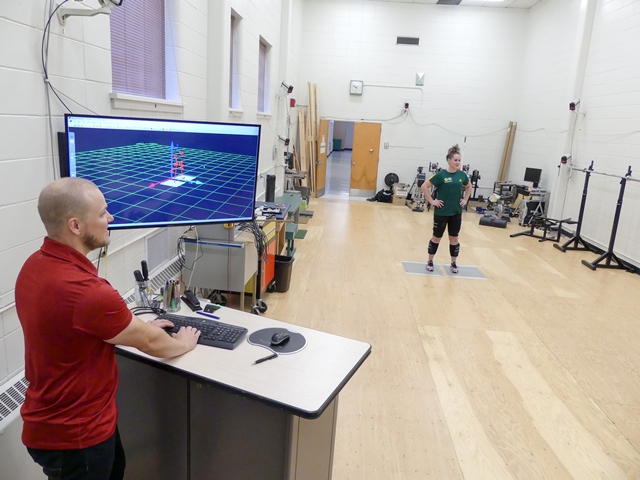
According to PhD student Torstein Eriksen Daehlin, what is known about the actions of different muscles is derived largely from the centuries-old practice of simply observing muscles in human cadavers. In fact, it has only been within the last century that technology has allowed researchers to even indirectly observe how muscles move.
"The technology limits us in that we only can measure the minimum force that all the muscles crossing a given joint generate," said Daehlin, one of 10 University of Alberta graduate students to receive a Vanier Scholarship. "However, when we are planning training programs for competitive athletes, it would be useful to know how much force each individual muscle is required to generate."
Daehlin, has been studying in the Faculty of Physical Education and Recreation for the past year under the supervision of associate professor Loren Chiu, is focusing his research on understanding the specific function of two calf muscles-the gastrocnemius and soleus muscles-during routine tasks, such as jumping, landing, running and walking.
To do this, Daehlin is using an exercise established in his current research lab that may be used to isolate the gastrocnemius muscle. Working with Golden Bears and Pandas student-athletes, Daehlin is comparing the jumping and landing technique of athletes engaging in volleyball and ice hockey. Once the data has been collected, he will input the information into a computer program and, through computer simulation, be able to look at how varying force generated by the gastrocnemius and soleus changes how we move. Following the computer simulation, he will put athletes through a training program with the hope of increasing the amount of force that the gastrocnemius generates to confirm or refute the findings from his computer model.
Daehlin's interest in the human body and muscle function was conceived in the training environment that comes with being a competitive weightlifter. Born and raised in Norway, Daehlin's love for sport and training not only landed him a spot on the Norwegian Junior National weightlifting team where he competed in a number of international events, it also inspired him to pursue a doctoral degree in biomechanics.
To Daehlin's knowledge, this type of test has not been done before. And while his research can be considered a basic study of muscle function, it can potentially have an impactful practical application.
"The results of this research could potentially help prevent injury in athletes, particularly those who regularly jump and land, as a training program that focuses on these specific calf muscles can help improve landing technique."
Daehlin also hopes that his findings can also make an impact in clinical settings, particularly for people living with cerebral palsy. The two calf muscles at the focus of this research tend to have spastic convulsions for those with cerebral palsy, which inhibits the ability to walk normally. With appropriate strength training targeting one or both of these muscles, Torstein hypothesizes some of these symptoms could possibly be alleviated or become less frequent.
